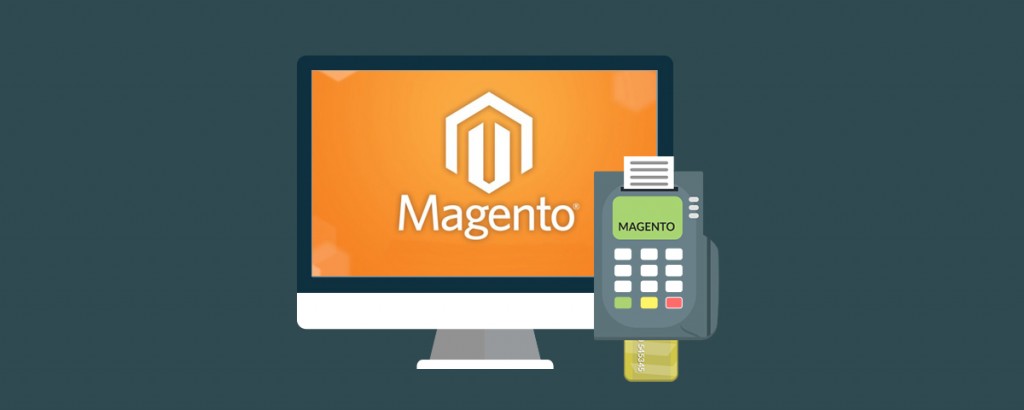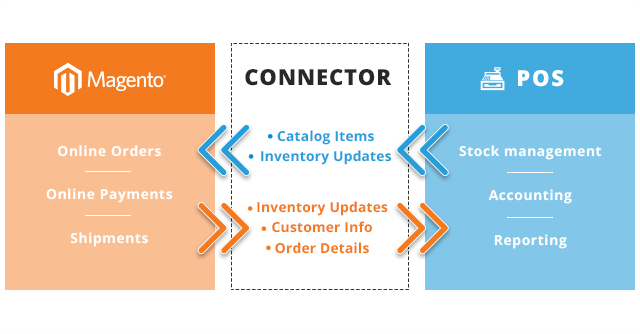When launching or pivoting a retail product line one of the critical items all business owners must address is that of which commerce arena to participate in – brick and mortar (i.e. physical retail locations) or ecommerce. Both have their benefits and shortfalls, and both require resource considerations and skill building from within the managing team. But, one of the most fascinating trends in business over the past 10 years is the proliferation of an “Omni-channel” revenue pipeline. By having platforms (particularly open source platforms) that can be easily connected to and developed on top of, we now have innovation being brought to the market that is helping retailers blend their offline business operations with a seamless back-office support system living entirely in the cloud. The benefits of a blended channel strategy are numerous (not the least of which is keeping a constant eye towards maximizing topline revenue growth) – but the process of integration will most commonly start where the sales process concludes inside the local retail shop – at the cash register.
Many retailers have upgraded their traditional cash registers to some kind of Point of Sale (POS) system, in order to increase sales and make inventory data more exposed to sales management. Trends in the market are also indicating that there are more and more Magento online store owners showing an interest for integration with a POS System.
There are several reasons why this integration can be necessary. For example, an online business has grown big enough to open a retail store; or oppositely, a store owner has decided to upgrade a traditional retail store with an online store. Another case, may be that store owners have a showroom where customers can buy goods or a complete look. In addition, making the Magento online system and existing POS system more integrated with a unique inventory database, which can be a Magento database or another master inventory system, can provide the same unique stock inventory for both Retail and Online stores.
In this post, I will describe advantages and potential disadvantages of introducing a POS system integrated with Magento. I will also provide a short review of the EBizmarts POS solution and some useful tips we have learned during integration with Magento on one of our projects.
ADVANTAGES
- Unique inventory stock for Online and POS systems
This is the biggest advantage in a scenario where both the online store and retail store (POS) will use same the inventory stock and receive information about availability of needed products in stock (quantity). In the case of separated stocks, there is always the possibility of a customer trying to order a product in the online store while simultaneously another customer is buying the very same product in the retail store. Advanced solutions can synchronize Magento and POS stocks; however, additional API development or a commercial solution is needed, and there still will be potentially dangerous situations in periods between synchronization (but that of course depends on the quality of the used solution).
In case you decide to use POS integrated with Magento, the above-mentioned stock issues will not be a problem because inventory information will be maintained in a centralized Magento database. Both POS and Online stores will read and update data in the Magento database. A system administrator can setup which (products or product categories) will be visible and available in the online store, retail store, or both (we will explain later how to setup store views in case of Ebizmarts POS and Magento integration).
In summary, a POS system integrated with Magento, using unique inventory stock data can reduce the number of returns, refunds, overselling and potentially conflicting situations with customers.
- Several Retail stores share same inventory stock
Things can become even more complicated in a traditional approach where the online store and retail store inventory is separated and there are more than one retail store. In that case, inventory stocks’ synchronization and maintenance becomes more complicated and time-consuming. In the same way, as one retail store POS system integrated with Magento is sharing unique stock inventory, several retail stores also share the same inventory; all retail stores will have updated information from the same stock source. This is a perfect solution for various catalog sales. The Magento administrator can prepare a sale category for a special occasion (e.g., Father’s Day) and configure it to be available in store view, which is used by POS systems in all of the retail stores.
- Hardware cost comparison with traditional POS systems
Traditional POS systems are running on specialized hardware, which is expensive and has limited capabilities and performances.
Using POS systems integrated with Magento is more budget-friendly, using cheaper PC computer or iPad / iPhone with the possibility of attaching the barcode scanner and simple card-swiping device when needed.
- Easy installation and integration with Magento
Installation and configuration of POS System and integration with Magento is straightforward.
Usually the Vendor, who is implementing the POS solution, will provide the Magento extension which needs to be downloaded, installed, and configured per instructions. You will probably need to configure an API Key, and potentially setup a SOAP user and appropriate user rights in order to enable Magento and POS to communicate and exchange data. Configuration details are dependent on the POS solution, and details are always provided by Vendor.
The next step is to install and configure settings on your POS web admin side, where the POS system needs to be pointed to Magento Store (you will probably need some kind of activation key provided during configuration of extension on Magento side or you will need to perform simple SOAP setup). For example, EBizmarts POS system is using API Key based configuration.
The last step is to download and install the POS app on the mobile device that will be used as POS terminal, and to connect it with the POS web back end or Magento Store directly. For example, in the case of Ebizmarts, App Devices are connected with Ebizmarts POS back end via Device Key, which are created in advance on the Ebizmarts back end.
Ebizmarts POS communication is essentially, Ebizmarts Web and Magento communicating via API by using API Key. POS Apps are communicating with Magento using the same API Key, which is distributed by EBizmarts Web only to Apps registered by Device Key.
Later in this post, the Ebizmarts POS – Magento Online store integration example will be explained.
- Advantages of Cloud based POS systems
Cloud-based POS solutions are the newest trend, taking place more and more in the market.
Major benefits of cloud based solutions are:
- Hardware compatibility:
A cloud-based POS solution can be used directly from a browser or any device connected to internet. In addition, more advanced solutions will provide an app for iPad and iPhone which will be in sync with web cloud-based solution and the client can choose a preferred approach. Here are several examples: (1) a sales manager can use a web application from the office to track and manage inventory from any device connected to the internet; (2) a retail merchant can use an iPad in a Retail store; and / or (3) a sales person uses an iPhone to check inventory stock at any moment. - Easy integration and upgrade:
Clients can use the POS system directly from a browser or install an app on their device, which will be in sync with inventory.
Automatic and instant upgrades are a huge advantage of this approach because there is no need for any manual upgrade (i.e., new functionality, security upgrade, bug fixes). The vendor upgrades the cloud solution and the client will experience new functionality immediately. Only in the case of an app-upgrade will a client still need to do it manually by downloading the latest version.
POSSIBLE DISADVANTAGES
- Just-in-Time selling
In some cases, online stores are providing catalogs of products which are not available in-stock, and a customer will purchase a product after another customer has actually ordered it via the online shop. In that case, the introduction of Magento – POS integration will not be a good option because the POS system and Magento will share the same inventory stock, where it is preferable for the retail store to have catalog of products available. In these cases, vendors should be careful and aware that additional customization and configuration will be needed.
- Additional cost and complexity
The introduction of new software system will increase up-front costs. Except for the additional system and integration cost, the client will also need to plan a budget for training of people who will use POS and maintain the system.
In addition, complexity of the whole system will be increased simply by the fact that new system is getting integrated.
EXPLORE HOW A MAGENTO — POS INTEGRATION CAN WORK FOR YOUR COMPANY
As explored in this post, there are many advantages to implementing a Magento — POS system integration. FarShore Partners has expertise in building customized websites, mobile apps, and e-commerce solutions that support business owners. Contact us today to get started, and make sure to stay tuned for guide on Ebizmarts POS and Magento integration coming next week!















[…] week we explored what are the advantages of integrating Magento with a POS system. In this article, we will walk through a recent project that illustrates the finer points of this […]